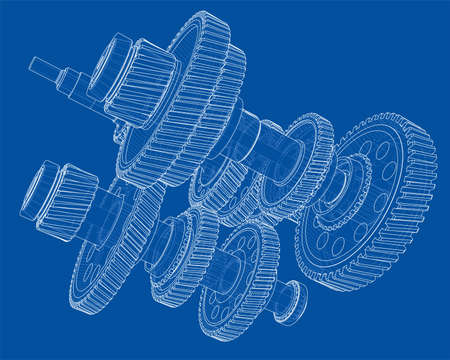1. Introduction to Forced Induction
When it comes to enhancing engine performance, forced induction systems play a crucial role. Both turbochargers and superchargers are designed to increase the amount of air entering the engine, allowing for more fuel combustion and, ultimately, more power. But why do car manufacturers and enthusiasts choose forced induction? Lets take a closer look at what these systems do and why they are so popular.
What Is Forced Induction?
Forced induction refers to any system that compresses air before it enters the engine, significantly improving combustion efficiency. Unlike naturally aspirated engines, which rely solely on atmospheric pressure, forced induction systems help engines produce more power without the need for increasing displacement.
Why Use Forced Induction?
The main goal of forced induction is to improve engine efficiency and performance. Here are some key reasons why automakers and car enthusiasts opt for turbochargers or superchargers:
- Increased Horsepower: By pushing more air into the engine, cars can generate more power without increasing engine size.
- Better Fuel Efficiency: Many turbocharged engines offer improved fuel economy compared to larger naturally aspirated engines with similar power output.
- Downsizing Engines: Manufacturers use forced induction to make smaller, more efficient engines while maintaining (or even improving) performance.
- Performance Tuning: Car enthusiasts use turbochargers and superchargers to enhance acceleration and overall driving experience.
Types of Forced Induction Systems
Both turbochargers and superchargers fall under the category of forced induction, but they operate differently. Heres a quick comparison of the two:
| System | Power Source | Performance Impact |
|---|---|---|
| Turbocharger | Exhaust gases | More efficient, potential turbo lag |
| Supercharger | Engine belt-driven | Instant power, reduced efficiency |
Why Manufacturers Use Forced Induction
Modern car manufacturers increasingly rely on forced induction to meet emissions regulations and fuel economy standards. By using turbochargers or superchargers, they can produce smaller engines with the power of larger ones. This strategy helps cars remain efficient without sacrificing performance.
Why Enthusiasts Love Forced Induction
For car enthusiasts, forced induction offers a pathway to significant performance upgrades. Whether its reducing turbo lag, increasing boost pressure, or customizing supercharger setups, adding a forced induction system can turn a stock vehicle into a performance machine.
2. How Turbochargers Work
A turbocharger is a device designed to increase an engine’s power output by using otherwise wasted exhaust gases to compress more air into the engine. More air means more fuel can be burned, leading to a significant boost in horsepower and overall performance.
The Mechanics Behind a Turbocharger
A turbocharger consists of a turbine and a compressor connected by a common shaft. Here’s how it works:
- Exhaust Gas Flow: The engine’s exhaust gases flow through the turbine side of the turbocharger.
- Turbine Rotation: As exhaust gases pass through, they spin the turbine, which is connected to the compressor.
- Compressed Air Intake: The spinning turbine turns the compressor wheel on the other side, drawing in and compressing fresh air before sending it into the engine’s intake manifold.
- Increased Power Output: The higher density of air allows for more fuel to be injected, resulting in greater combustion and more power.
Key Components of a Turbocharger
| Component | Function |
|---|---|
| Turbine | Uses exhaust gases to spin and generate power for the compressor. |
| Compressor | Draws and compresses air before sending it into the engine. |
| Intercooler | Cools the compressed air to improve efficiency and prevent engine knocking. |
| Wastegate | Regulates the flow of exhaust gases to control boost pressure. |
Benefits of Turbochargers
- Improved Fuel Efficiency: Smaller turbocharged engines can produce power similar to larger, naturally aspirated engines while using less fuel.
- More Power: Turbochargers greatly increase horsepower and torque by efficiently using exhaust gases.
- Compact Design: Since they rely on exhaust gases instead of a direct belt-driven mechanism, turbochargers save space in the engine bay.
Potential Drawbacks
- Turbo Lag: There is often a slight delay in power delivery as the turbo spools up.
- Higher Heat Production: Turbochargers generate a lot of heat, which requires proper cooling and heat management.
- Increased Complexity: More components mean more potential maintenance concerns and repair costs.

3. How Superchargers Work
Superchargers are a popular choice for those who want instant power without the lag commonly associated with turbochargers. Unlike turbos, which rely on exhaust gases to spool up, superchargers are belt-driven, meaning they deliver immediate boost as soon as you hit the throttle.
Types of Superchargers
There are three main types of superchargers, each with unique characteristics that affect power delivery and efficiency.
| Type | How It Works | Pros | Cons |
|---|---|---|---|
| Roots Supercharger | Uses large spinning lobes to push air directly into the intake manifold. | Instant power, simple design, reliable operation. | Bulkier, less efficient at high RPM, generates more heat. |
| Twin-Screw Supercharger | Compresses air internally between intermeshing screws before it enters the engine. | Efficient air compression, more power than Roots, good mid-range performance. | Higher cost, can generate heat under heavy use. |
| Centrifugal Supercharger | Uses an impeller to compress air, similar to a turbocharger, but driven by a belt. | Compact, higher efficiency, excellent high-RPM performance. | Less low-end power, slower boost response compared to Roots and twin-screw. |
Immediate Power When You Need It
Because superchargers are mechanically driven, they provide consistent and predictable power delivery. There’s no waiting for boost to build—once you press the gas, the power is there. This makes superchargers a great option for muscle cars, drag racers, and anyone looking for strong low-end torque.
The Trade-Off: Power vs. Efficiency
One drawback of superchargers is that they take power from the engine to operate. Unlike a turbocharger that uses exhaust energy, a supercharger runs off the engine’s crankshaft, meaning some horsepower is used to drive it. While this results in immediate power, it can also affect fuel efficiency and overall engine efficiency.
Is a Supercharger Right for You?
If you’re looking for instant throttle response, predictable power delivery, and a straightforward installation, a supercharger could be the perfect choice. However, keep in mind the trade-offs in efficiency and potential engine strain due to the added load on the crankshaft.
4. Pros and Cons: Turbochargers vs. Superchargers
When choosing between a turbocharger and a supercharger for your vehicle, it’s important to understand the pros and cons of each system. Both offer significant performance benefits, but they differ in how they deliver power, their efficiency, lag, and overall cost. Below, we break down these factors to help you decide which system best suits your needs.
Power Delivery
One of the biggest differences between turbochargers and superchargers is how they deliver power. Turbochargers rely on exhaust gases to spin a turbine, which means they take a moment to build up boost. Superchargers, on the other hand, are connected directly to the engine’s crankshaft, providing immediate power gain.
| Factor | Turbocharger | Supercharger |
|---|---|---|
| Power Delivery | Boost builds up over time, leading to turbo lag | Immediate power boost, no lag |
Efficiency
Turbochargers are generally more efficient than superchargers because they use exhaust gases that would otherwise be wasted. This leads to better fuel economy. Superchargers, since they are driven by the engine, consume some of the engine’s power, making them less efficient.
| Factor | Turbocharger | Supercharger |
|---|---|---|
| Fuel Efficiency | More efficient, uses exhaust gases | Less efficient, consumes engine power |
Lag
Turbo lag is a common issue with turbochargers because they take time to spool up and produce boost. Superchargers don’t have this issue since they are mechanically driven.
| Factor | Turbocharger | Supercharger |
|---|---|---|
| Throttle Response | Slight delay due to turbo lag | Immediate response |
Cost and Complexity
Turbochargers tend to be more complex and may require additional components like an intercooler and stronger internal engine parts. Superchargers are simpler but can place extra strain on the engine.
| Factor | Turbocharger | Supercharger |
|---|---|---|
| Cost | Usually more expensive due to complexity | Often cheaper and easier to install |
| Maintenance | More potential for overheating and failures | Generally more reliable, but adds engine strain |
Final Thoughts
Both turbochargers and superchargers have their advantages and disadvantages. Turbos offer better efficiency and higher power potential but suffer from lag and increased complexity. Superchargers provide instant power with simpler mechanics but at the cost of efficiency. Understanding these trade-offs will help you decide which is best for your performance goals.
5. Which One is Right for You?
Deciding between a turbocharger and a supercharger depends on several factors, including your driving style, vehicle type, and overall performance goals. Both forced induction systems offer unique advantages, so let’s break it down to help you make the best choice.
Driving Style
Your daily driving habits play a key role in determining the best option:
| Driving Style | Turbocharger | Supercharger |
|---|---|---|
| City and Stop-and-Go Traffic | Can experience lag, efficiency may improve with smaller turbos | Instant throttle response, better for quick acceleration |
| Highway Cruising | More efficient at steady speeds, gains in fuel economy | Constant power output, but may consume more fuel |
| Track Days / Performance Driving | Increases power at higher RPMs, great for top-end speed | Instant power from low RPM, better for quick bursts of acceleration |
Vehicle Type
The type of vehicle you drive can determine which system is better suited for you:
- Smaller Engines (4-Cylinders, Small Displacement): Turbochargers are often preferred for boosting power efficiently.
- V8 Muscle Cars: Superchargers are common in these vehicles for their instant power delivery.
- Trucks & Towing: Superchargers provide predictable power and torque for hauling heavy loads.
- Sports Cars: Turbochargers are favored in many modern performance cars for their high-RPM power gains.
Performance Goals
Consider what you aim to achieve with forced induction:
- Fuel Efficiency: Turbochargers are generally the better choice since they utilize exhaust gases to generate boost.
- Instant Power: Superchargers excel in delivering power without lag.
- Cost & Complexity: Superchargers are simpler to install but may have a constant power drain, while turbos require more plumbing and tuning.
Final Thoughts
Ultimately, if you prioritize efficiency and high-speed performance, a turbocharger may be the right fit. However, if you seek immediate, consistent power with no lag, a supercharger could be the better option. Understanding your driving needs and vehicle characteristics will help you make a confident decision.


